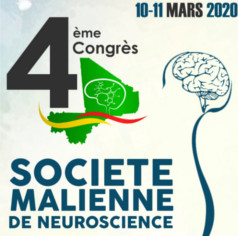Speaker
Description
INTRODUCTION: Zidovudine is one of the very active antiretroviral treatments which have been effective in several combination regimens for the treatment of HIV disease. Widely accepted theories have recognized that such treatment regimens agents are capable of penetrating the blood brain barrier and may continue to exert damage to the brain, after antiviral treatment.
GOALS: The objective of this study is to investigate zidovudine-induced morphological changes in auditory relay centers of the brain. It is likely that the adverse effects of zidovudine as reported by several researches may be due to some underlying effect on the microanatomy of the intracranial auditory relay centers.
MATERIALS AND METHODS: Forty rats with an average weight of 200g were randomly assigned into treatment (n1=20) and control (n2=20) groups. Zidovudine was dissolved in distilled water and a dose of 300mg/70kg (0.857mg/200g) was calculated and administered twice daily to the rats of the treatment group orally by the use of an orogastric tube for thirty days. The control group received an equal volume of distilled water as a placebo. The rats were later sacrificed by cervical dislocation and the inferior colliculi and medial geniculate bodies were dissected for morphometric and histological analysis.
RESULTS/DISCUSSION: Results from this study revealed a significant increase (p < 0.05) in weight of the inferior colliculus of the treated rats but a significant decrease (p < 0.05) in weight of the medial geniculate body of the treated rats, as compared to their corresponding control groups. Histologically, the treated tissues revealed similar necrotic and cellular degenerative changes in the stroma when compared to tissues from the control group. These observations confirm the adverse effects of Zidovudine on the inferior colliculus and medial geniculate body of adult Wistar rats. However, it was also observed in this study that the effect of zidovudine was not similar on the two intracranial relay centers as previously believed.
CONCLUSION: Further studies are needed in corroborating these observations, especially to determine the mechanism of hearing loss that is associated with zidovudine therapy.
REFERENCES.
1. Adjene J.O., Avbunudiogba J.A., Awhin P.E., Igbigbi P.S. (2012). Biochemical effects of chronic administration of efavirenz on the intracranial auditory relay centers of adult Wistar rats. Genomic Med Biomarkers Health Sci 4:85 9.
2. Adjene J.O., Igbigbi P.S. (2012). Effects of chronic administration of efavirenz on the chromatophilic substance of the intracranial auditory relay centers of adult Wistar rats. Int J Morphol 30 (3):993 8.
3. Angeli S.I., Bared A., Ouyang X., Du L.L., Yan D., Zhong Liu X. (2012). Audio profiles and antioxidant enzyme genotypes in presbycusis. Laryngoscope 122:2539 42.
4. Bauer C.A., Kurt W., Sybert L.T., Brozoski T.J. (2013). The cerebellum as a novel tinnitus generator. Hear Res 295:130 9.
5. BremnerJ.D. (2006). Stress and brain atrophy. CNS Neurol Disord Drug Targets 5:503 12.

